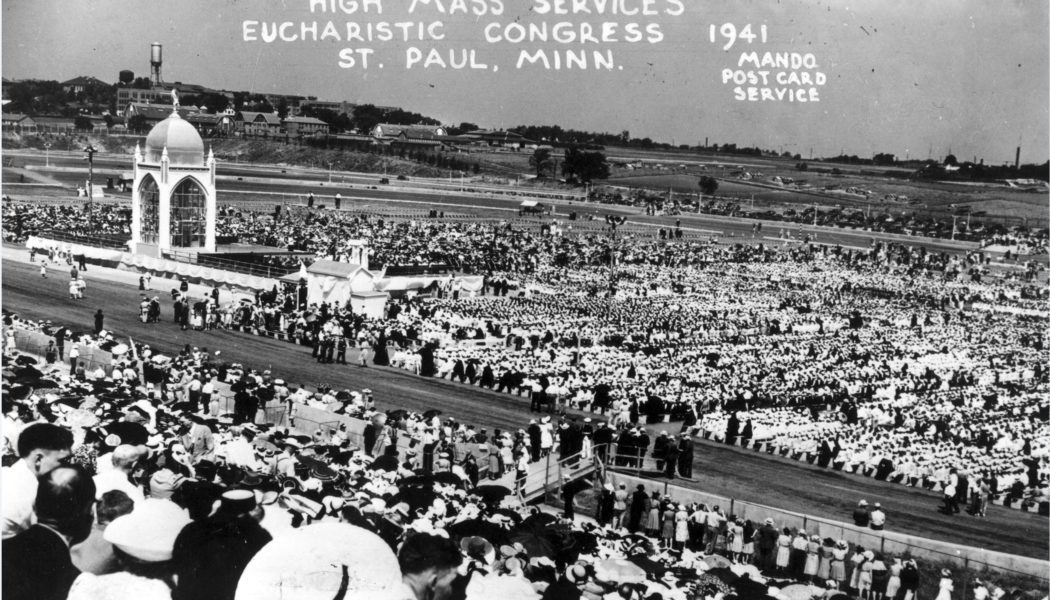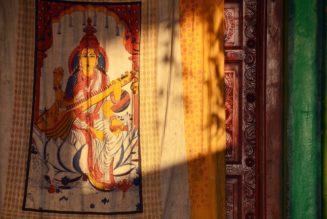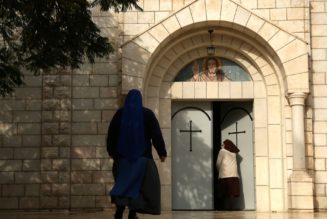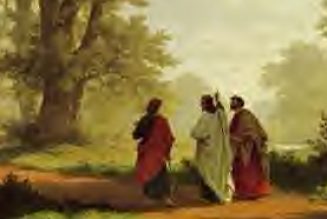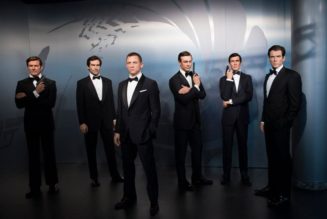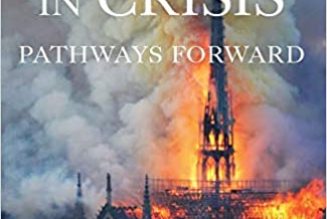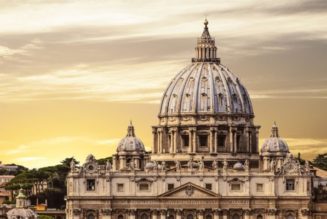The ninth National Eucharistic Congress drew tens of thousands of faithful from all over the country to Minnesota’s Twin Cities to celebrate the Real Presence of Jesus in the Blessed Sacrament and worship him together in humble adoration.
The year 1941 was quite a year in U.S. history. Franklin Delano Roosevelt was president. The average price of a new house was $4,075. Citizen Kane was released. World War II, the greatest global conflict the world has ever seen, was on the verge of breaking out.
It also happens to be the last time the U.S. held a National Eucharistic Congress. From June 23-26 of that year, the ninth National Eucharistic Congress drew tens of thousands of faithful from all over the country to Minnesota’s Twin Cities to celebrate the Real Presence of Jesus in the Blessed Sacrament and worship him together in humble adoration.
Chalk it up to Providence — not coincidence — that the 10th National Eucharistic Congress taking place next month in Indianapolis comes at a time when the United States once again needs — perhaps even more so than it did 83 years ago — to come together to proclaim Jesus as Lord.
Looking back at the 1941 National Eucharistic Congress certainly highlights some differences from today’s world, but there’s also much in common. After all, while the world is ever-changing, “Jesus Christ is the same yesterday, today and forever” (Hebrews 13:8). Indeed, the theme of the 1941 Congress, “Our Eucharistic Lord, Glorified by Sacrifice,” still resounds today.
An official record and history of the Ninth Eucharistic Congress was published in September 1941 and offers a detailed recounting of the occasion, which is still remembered as one of the most significant events ever hosted by the Archdiocese of Minneapolis and St. Paul. Even during a time without social media, pilgrims from far and wide caught wind of the gathering and converged on the Minnesota State Fairgrounds, which was transformed into a “National Eucharistic Center,” replete with 100,000 benches, a pipe organ and a majestic primary altar surrounded by many additional altars. A hundred more altars were also set up at the Minneapolis Auditorium, the St. Paul Auditorium and the St. Paul Hotel.
Why so many altars? The reason is because pre-Vatican II guidelines prohibited the concelebration of multiple Masses simultaneously, so a way to maximize the number of Masses that could be said was setting up multiple altars and celebrating Mass every half hour. All told, it is estimated that 1,000 Masses were celebrated daily between 6 a.m. and 9 a.m. on 500 altars during each day of the congress. That’s more than 10,000 Masses in four days.

The opening ceremony of the congress was an extravagant one. More than 5,000 people gathered to welcome the papal legate, Cardinal Dennis Dougherty, archbishop of Philadelphia, to the city. Cardinal Dougherty arrived by train at the Union Depot and was welcomed by Archbishop John Murray of St. Paul. From there, a procession was led to the Cathedral of St. Paul for the liturgical reception.
The cathedral was filled well beyond capacity, with eager pilgrims gathered together to honor the Eucharistic Lord. The official record describes it: “The scene within the Cathedral during the liturgical reception was not one that could be easily forgotten.” Later that evening, Cardinal Dougherty was formally and civically welcomed by Minnesota Gov. Harold Stassen in a ceremony at the Minneapolis Auditorium with more than 10,000 in attendance.

The following day, the opening Mass for the congress was celebrated. It was a hot summer day, and more than 50,000 people surrounded the altar on three sides at the National Eucharistic Center.
“When the time for Mass drew near,” the official record recounts, “a procession of a thousand priests, hundreds of monsignori, and a hundred or more archbishops and bishops marched toward the altar from a pavilion at a distance.”
A choir comprising 1,000 voices drawn from various parishes, all of whom began rehearsing months earlier, sang beautiful renditions of traditional Eucharistic hymns during the Mass, accompanied by a symphony orchestra and pipe organ.
Another highlight of the first day of the Congress, which also “left the deepest impression on many visitors to the Congress,” was a Holy Hour and midnight Mass for men at the Eucharistic Center. A great crowd of 75,000 men worshipped through the night by candlelight in a solemn display of humble devotion. The official record recounts: “The Congress altar and the field surrounding it were illuminated by spot and floodlights. The great monstrance atop the baldachin … sent over the grandstand and arena a bright beam which issued from its center.”
Coordinating and hosting the congress brought many financial and logistical challenges, but the planning committees thought ahead to ensure that food was readily available for pilgrims. According to the official record, “Ample provision for serving food in dining rooms and stands had been made by the Finance Committee, so that it was not necessary to lose time searching for eating places outside the Center.”
Astoundingly, the entire event was mainly paid for through the sale of a patented “Congress Emblem” purchased by individual Catholics for 50 cents each, which raised about $120,000. The congress raised an additional $40,000 from unsolicited donations and concessions. In the end, only $118,000 was disbursed, and the remaining funds were donated to the Minnesota Eucharistic Society, an organization tasked with extending and promoting devotion to and adoration of the Eucharist.

The final day of the congress was marked by a Pontifical Mass attended by more than 100,000 pilgrims. Following the Mass, the voice of Pope Pius XII was heard on the loudspeakers for a special broadcast in which he urged the faithful to maintain a spirit of sacrifice and reparation to guard against the encroaching paganism of the age — a call that still echoes today.
To bring the congress to its climactic close, a massive Eucharistic procession solemnly marched through the streets of St. Paul, beginning at the Church of St. Andrew in Como Park and ending at the Eucharistic Center. Stassen declared June 26 a state holiday and encouraged businesses to close in the afternoon to accommodate the procession. It was a sweltering hot day, and a strong but brief rainstorm wetted the ground and cooled the temperature for pilgrims — a welcome respite that allowed them to see the four-hour procession through to the end.
At the final Benediction, “thousands who had come with no protection against rain knelt on wet benches or even in the surrounding sea of mud to show their love for the Lord who had drawn them to the gathering.”
